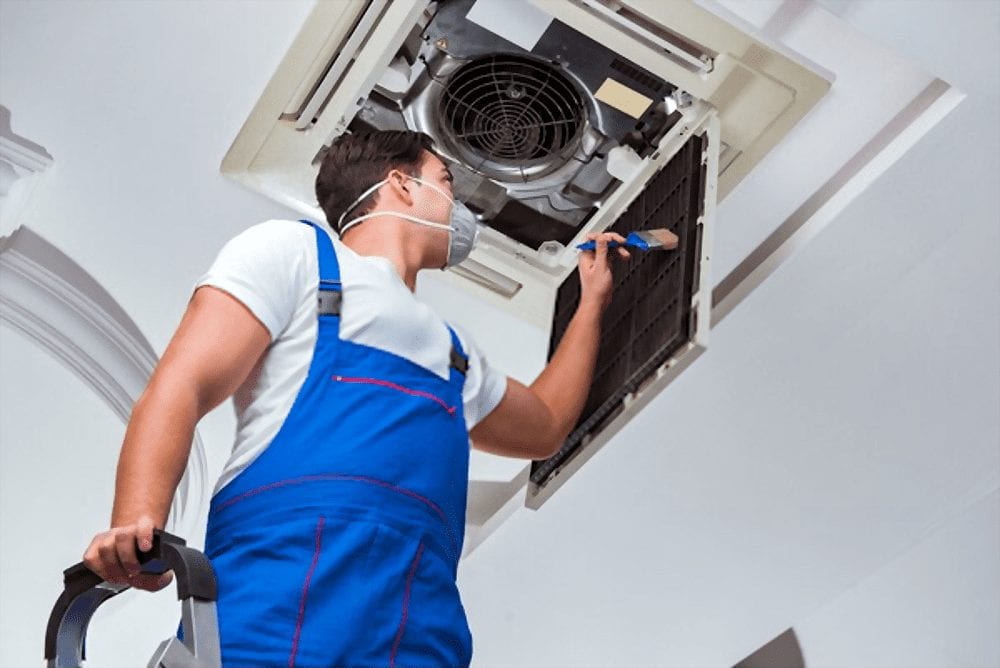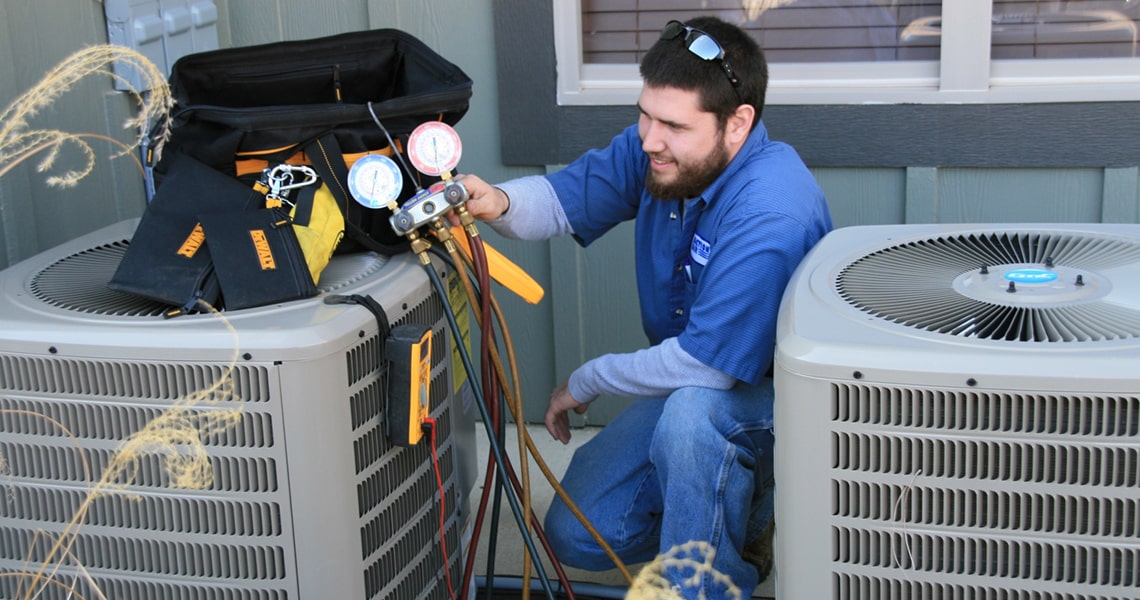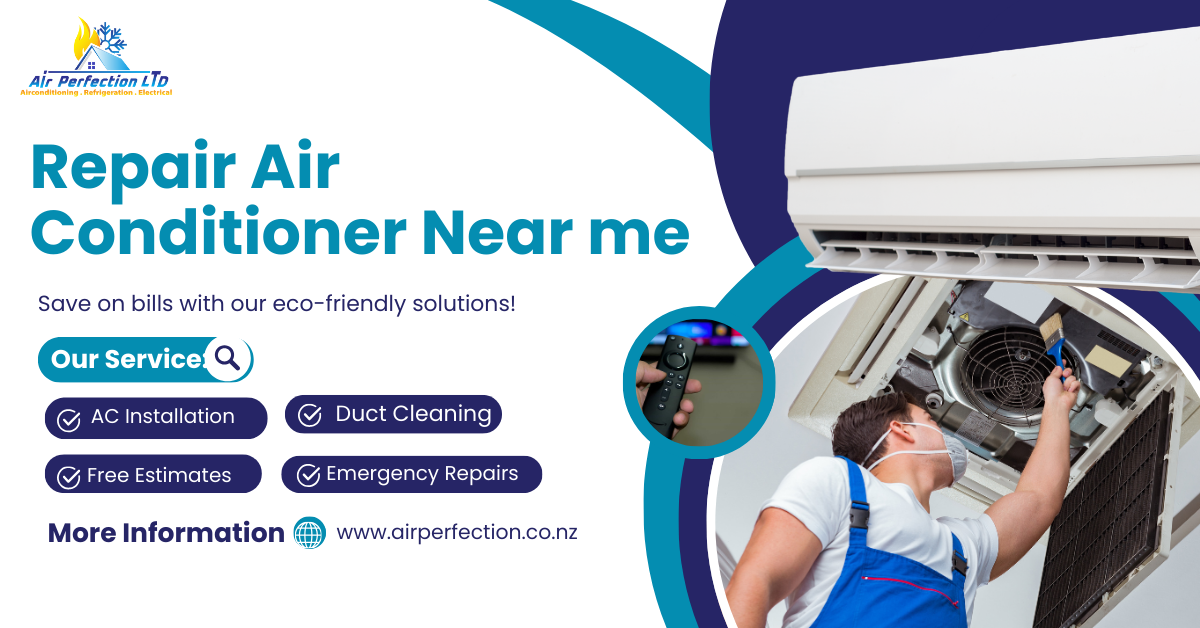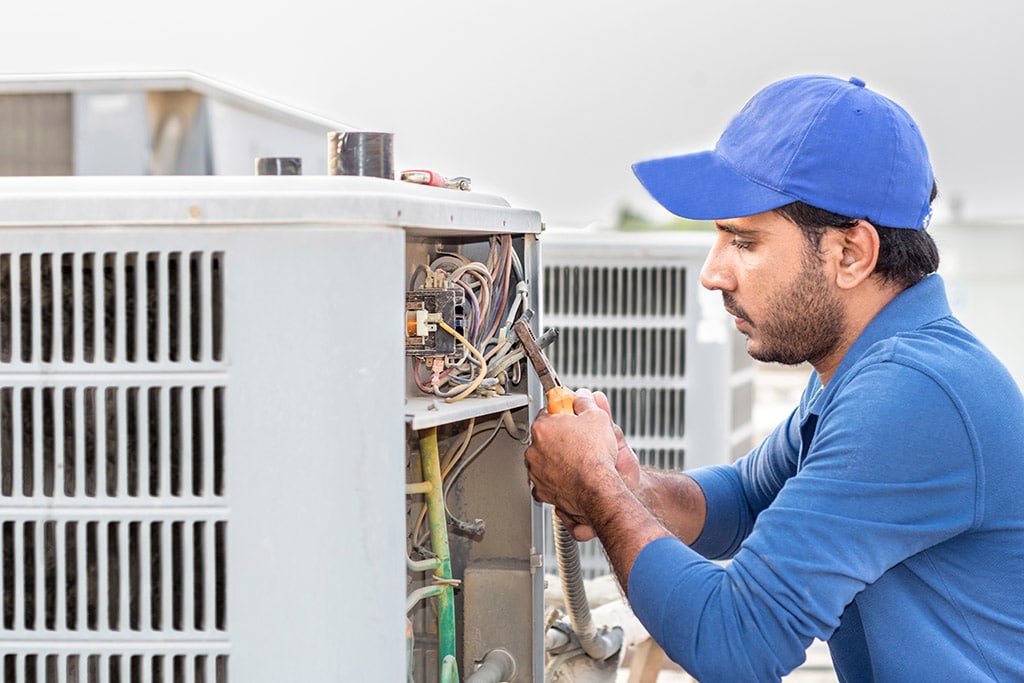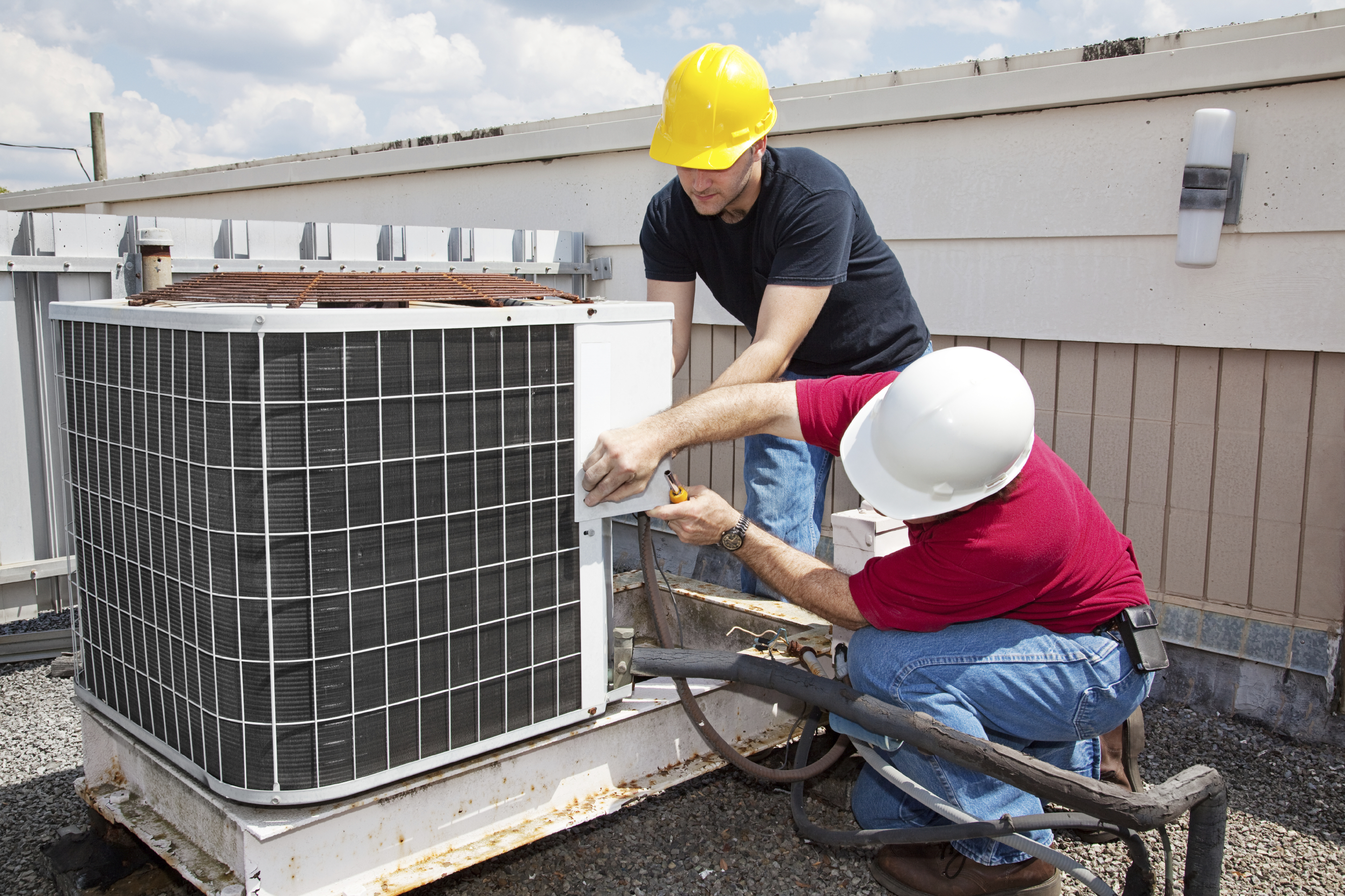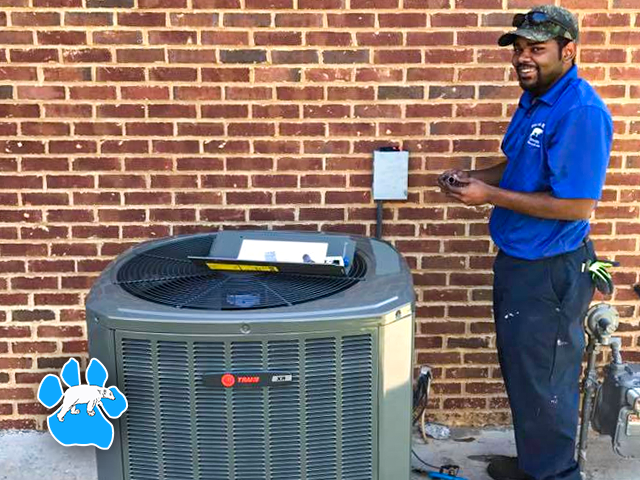Air Conditioning Service Company Near Me

Imagine this: It's a sweltering summer day, and you walk into your home expecting a blast of cool, refreshing air. Instead, you're greeted by...warmth. Your air conditioner is running, but it's not cooling properly. This is a common problem for homeowners, and before you frantically search "Air Conditioning Service Company Near Me" and make a potentially costly call, let's troubleshoot this together.
Diagnosing the "Not Cooling" Air Conditioner
Don't panic! We'll approach this systematically. Follow these steps to identify the cause of the problem. We'll start with the easy checks and progress to more involved ones.
Step 1: Is the Thermostat Set Correctly? (No Tools Needed)
This might seem obvious, but it's the most common culprit. Double-check your thermostat! Is it set to "Cool"? Is the temperature set lower than the current room temperature? A simple mistake can cause the entire system to malfunction. Also, ensure it's not in "Fan Only" mode, which only circulates air, not cools it.
Step 2: Check the Air Filter (No Tools Needed)
A dirty air filter is a prime suspect in poor cooling performance. It restricts airflow, making your AC unit work harder and less efficiently. This can even lead to the system freezing up. Where is the air filter? It's usually located in one of these places:
- In the return air vent (a large vent usually in a hallway or living room).
- At the air handler unit itself (often in the attic, basement, or a closet).
Remove the filter and hold it up to the light. Can you see through it? If it's covered in dust and debris, it's time for a replacement. Replacing a dirty filter is one of the easiest and cheapest things you can do to improve your AC's performance.
Step 3: Inspect the Outdoor Unit (No Tools Needed – But Be Careful!)
The outdoor unit, also known as the condenser, is a vital part of your AC system. Go outside and take a look at it. Make sure it's not obstructed by anything. Bushes, plants, or debris can block airflow and cause the unit to overheat. Clear away anything within a couple of feet of the unit.
Safety First! Before you start poking around, turn off the power to the outdoor unit at the breaker box. This is a crucial safety precaution to avoid electrical shock.
Once the power is off, visually inspect the condenser coils. These are the fins that surround the unit. Are they covered in dirt, leaves, or grass clippings? Carefully clean the coils with a garden hose. Use a gentle spray to avoid damaging the fins. You can also use a fin comb (available at most hardware stores) to straighten any bent fins.
Step 4: Check the Indoor Unit (Air Handler) (No Tools Needed – Then Maybe Some Tools)
Locate your indoor unit (air handler). This is usually in your attic, basement, or a closet. Make sure the area around the unit is clear and unobstructed.
Look for signs of ice buildup on the copper lines leading into the unit. If you see ice, immediately turn off the AC system. Ice buildup is a sign of a serious problem, often related to low refrigerant or restricted airflow. Letting it thaw may provide temporary relief and also confirm you have found the root issue.
Check the drain pan beneath the unit. Is it full of water? A clogged drain line can cause the system to shut down or leak water. You can try to clear the drain line yourself. Locate the drain line (usually a PVC pipe) and try using a wet/dry vacuum to suck out any clogs. You can also use a stiff wire to carefully break up any obstructions. Be gentle!
Step 5: Check the Circuit Breaker (No Tools Needed)
Sometimes, the problem is as simple as a tripped circuit breaker. Go to your electrical panel and check the breaker for your AC unit. If it's tripped (in the "off" position), flip it all the way to "off" and then back to "on."
If the breaker trips again immediately, do not keep resetting it. This is a sign of a more serious electrical problem, and you should call a qualified electrician or HVAC technician.
DIY Actions (Proceed with Caution!)
Based on your troubleshooting, here are some DIY actions you might be able to take:
- Replace the air filter: This is a must-do if your filter is dirty.
- Clear obstructions from the outdoor unit: Remove any plants, debris, or other items blocking airflow.
- Clean the condenser coils: Gently spray the coils with a garden hose to remove dirt and debris.
- Clear the drain line: Use a wet/dry vacuum or a stiff wire to remove any clogs.
When to Call a Professional – "Air Conditioning Service Company Near Me" Becomes Your Friend
Sometimes, DIY troubleshooting isn't enough. Here are some situations where you should definitely call a qualified HVAC technician:
- Refrigerant Leaks: If you suspect a refrigerant leak (you might notice a sweet, oily smell near the unit), do not attempt to fix it yourself. Refrigerant is a hazardous substance, and handling it requires specialized equipment and training.
- Electrical Problems: If you suspect an electrical problem (such as a constantly tripping breaker), do not attempt to fix it yourself. Electrical work is dangerous and should only be performed by a qualified electrician.
- Compressor Issues: The compressor is the heart of your AC system. If you suspect a compressor problem (the unit is making loud noises, or not running at all), you'll need a professional.
- Ice Buildup: Significant ice buildup on the coils or refrigerant lines usually indicates a more complex issue, such as low refrigerant or a malfunctioning component.
- You've Tried Everything Else: If you've followed all the troubleshooting steps and your AC is still not cooling properly, it's time to call in the experts.
Equipment Considerations
While most of the initial checks don't require tools, some basic equipment might be helpful for more thorough troubleshooting:
- Screwdrivers: A Phillips head and flathead screwdriver are essential for removing panels and accessing components.
- Wet/Dry Vacuum: Useful for clearing clogged drain lines.
- Fin Comb: For straightening bent condenser fins.
- Multimeter (for advanced users): A multimeter can be used to check voltage and continuity, but only if you are comfortable working with electricity. Otherwise, leave this to the professionals.
Specific Problems and What They Mean
- AC Runs But Doesn't Cool: Often caused by a dirty air filter, blocked condenser, low refrigerant, or a malfunctioning compressor.
- AC Runs Constantly: Could be due to a dirty air filter, undersized AC unit, leaky ductwork, or poor insulation.
- AC Cycles On and Off Frequently (Short Cycling): Can be caused by an oversized AC unit, a dirty air filter, or a refrigerant leak.
- AC is Making Loud Noises: Could indicate a problem with the fan motor, compressor, or other internal components.
- Water Leaking from AC Unit: Usually caused by a clogged drain line.
Preventative Maintenance: Avoiding the "Air Conditioning Service Company Near Me" Search
The best way to avoid AC problems is to perform regular preventative maintenance. Here are some tips:
- Change your air filter regularly: At least every 1-3 months, or more often if you have pets or allergies.
- Schedule an annual AC tune-up: A qualified HVAC technician can inspect your system, clean the coils, check the refrigerant levels, and identify any potential problems before they become major issues.
- Keep the outdoor unit clean: Clear away any debris that could block airflow.
- Consider a smart thermostat: Smart thermostats can help you optimize your energy usage and identify potential problems early on.
Budgeting for Repairs
It's always a good idea to have a budget for potential AC repairs. The cost of repairs can vary widely depending on the problem, but here are some general guidelines:
- Air filter replacement: $5-$20
- Drain line cleaning: $75-$200
- Refrigerant recharge: $200-$500+ (depending on the amount of refrigerant needed)
- Compressor replacement: $1,000-$3,000+
- New AC unit installation: $3,000-$7,000+
Conclusion: Empowerment and Knowledge
By following these troubleshooting steps and understanding the basics of your AC system, you can confidently diagnose many common problems and potentially save yourself a service call. Remember to always prioritize safety and call a qualified professional when you're unsure or dealing with potentially dangerous issues. With a little knowledge and preventative maintenance, you can keep your AC running smoothly and enjoy a cool, comfortable home all summer long.
And when searching "Air Conditioning Service Company Near Me" becomes necessary, you'll be better equipped to discuss the issue with the technician and understand the recommended repairs. You are now an empowered homeowner!
